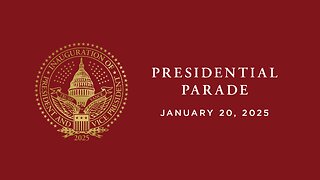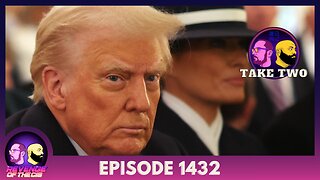Premium Only Content

Navigating the Customs Clearance Process: The Key Phases After ISF Submission
ISF Depot // 661-246-8217 // customs@isfdepot.com // www.isfdepot.com
This response provides an overview of the key phases that occur after the submission of an Importer Security Filing (ISF) in the customs brokerage process. It begins by explaining the customs bonding process and its importance in guaranteeing the importer's compliance and financial obligations. The response then discusses the examination and release of goods, highlighting the CBP's role in ensuring compliance and the potential actions required if issues arise. It then explores the assessment of liquidated damages and penalties for incorrect or late ISF filings. The response concludes by discussing post entry amendments and the role of customs brokers in assisting importers with amending entry documents accurately and in a timely manner. Overall, understanding these phases is crucial for customs brokers and importers in navigating the customs clearance process.
#usimportbond #isfcustomsbroker #uscustomsclearing #isfentry
Video Disclaimer Here: This tutorial is independent and not affiliated with any US governmental entities.
00:40 - Customs bonding process involves a contract between the importer and CBP to guarantee fulfillment of legal and financial obligations.
01:01 - Examination and release of goods phase involves CBP inspection to ensure compliance with regulations and may require further action if issues are identified.
02:10 - Assessment of liquidated damages and penalties phase can occur if ISF is not filed correctly or on time, necessitating accurate and timely filings.
02:49 - Post entry amendments phase may be necessary to amend entry documents after goods are released, requiring accurate and timely submissions to CBP by customs brokers.
-
 LIVE
LIVE
GOP
17 hours agoDonald J. Trump Attends the Presidential Parade
4,359 watching -
 LIVE
LIVE
Right Side Broadcasting Network
7 days ago🔴 LIVE: The Inauguration of Donald J. Trump as the 47th President of The United States 1/20/25
78,898 watching -
 LIVE
LIVE
Kimberly Guilfoyle
4 hours agoLive Inauguration Day Coverage
2,081 watching -
 LIVE
LIVE
Benny Johnson
2 hours ago🚨 Watch President Trump FREE January 6th Political Prisoners LIVE Right Now | Stadium ROARS
12,313 watching -
 1:06:36
1:06:36
The Rubin Report
4 hours agoNo One Expected These Brutal Moments in Trump’s Inauguration Speech with Co-Host Sage Steele
48.8K66 -
 LIVE
LIVE
Dr Disrespect
7 hours ago🔴LIVE - DR DISRESPECT - DELTA FORCE - STARFALL NEW SEASON
2,185 watching -
 1:58:31
1:58:31
Revenge of the Cis
3 hours agoEpisode 1432: Take Two
27.6K4 -
 5:43:05
5:43:05
Bitcoin Magazine
7 days agoLIVE: Donald Trump Inauguration | America's First Bitcoin President
37.9K2 -
 1:04:13
1:04:13
In The Litter Box w/ Jewels & Catturd
19 hours agoINAUGURATION DAY | In the Litter Box w/ Jewels & Catturd – Ep. 723 – 1/20/2025
54.8K21 -
 3:20:22
3:20:22
Steven Crowder
9 hours agoCrowder Inauguration Day Live Stream 2025 | The Return of Donald Trump!
1.11M404